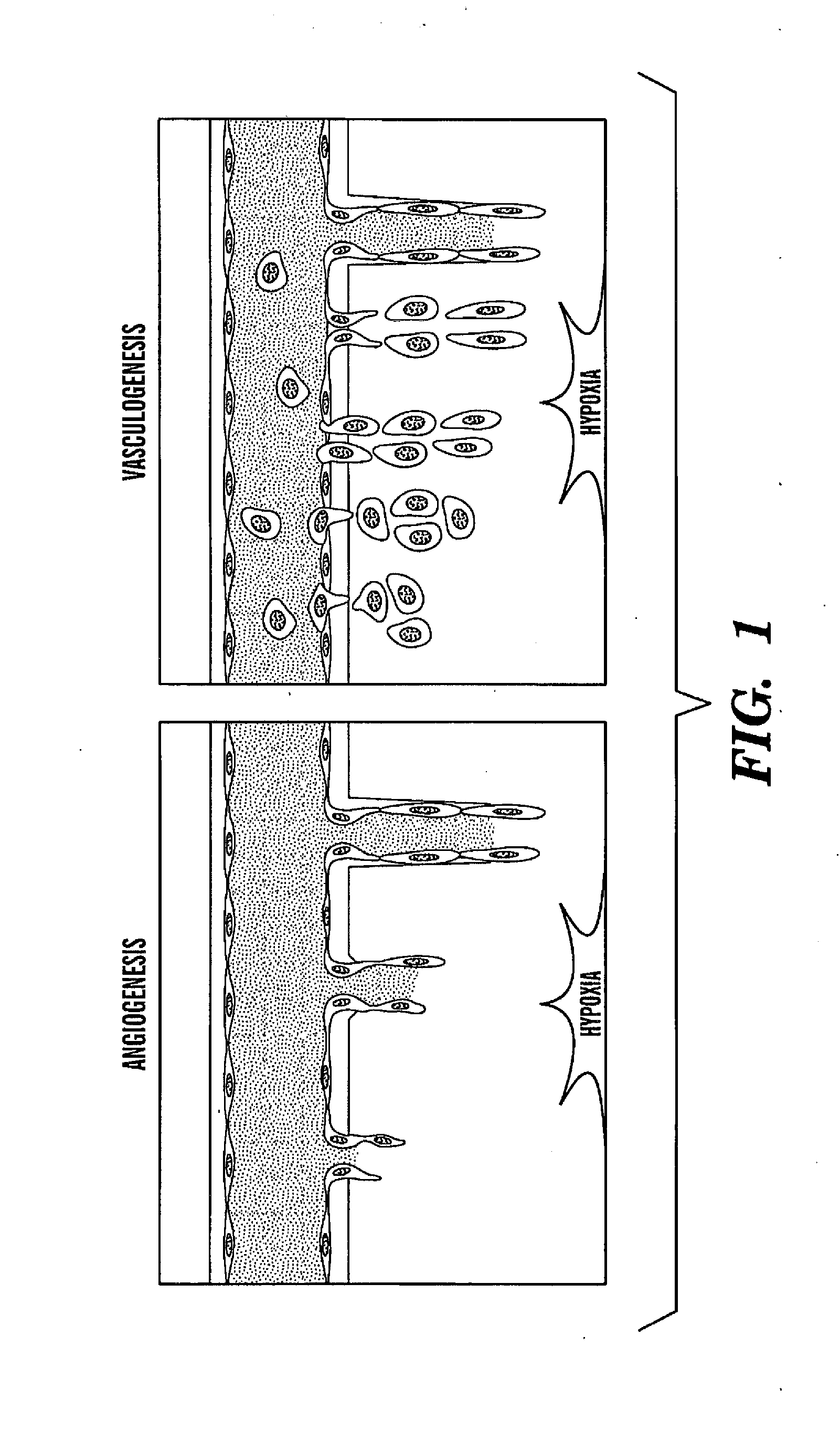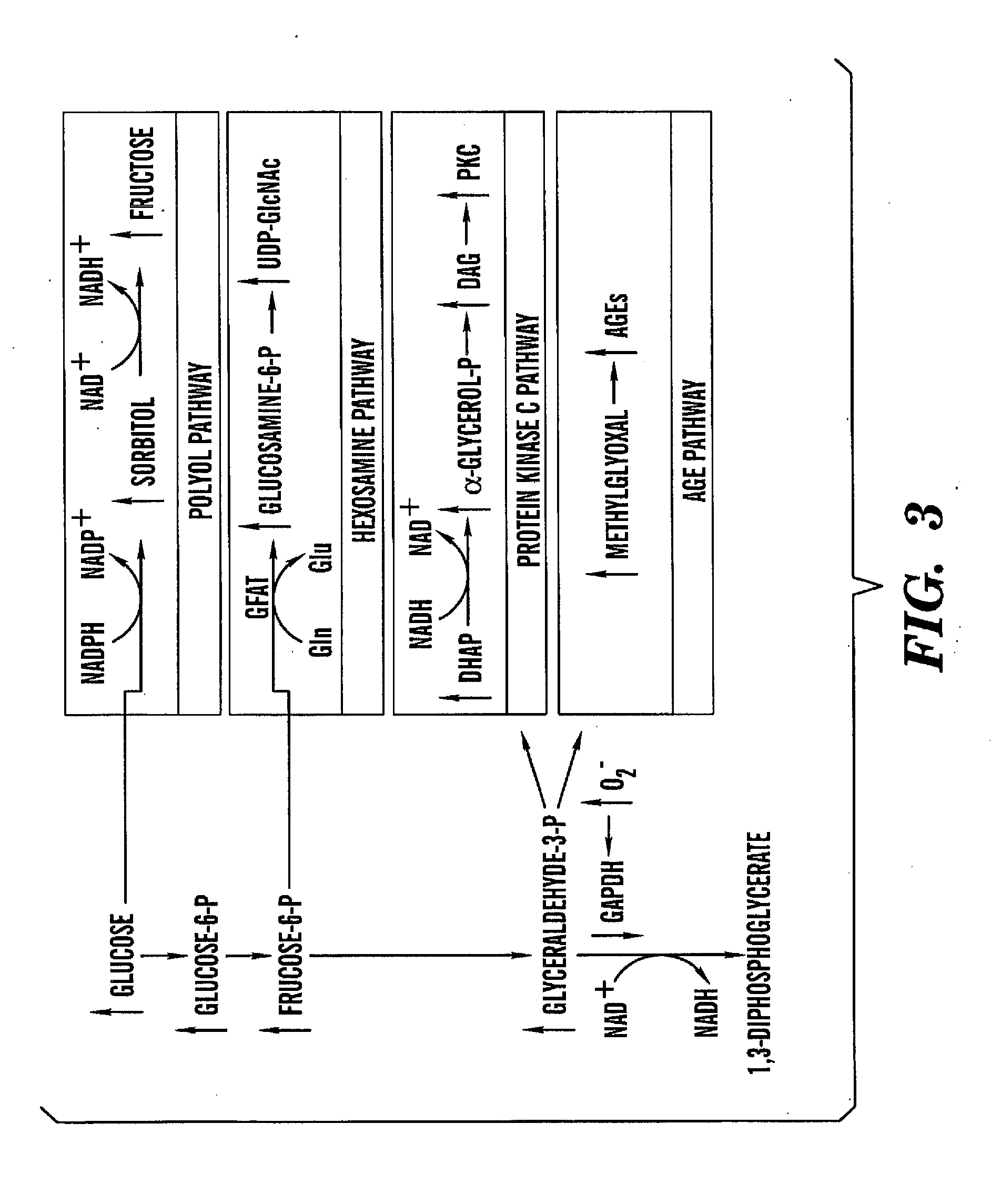Method Of Treating Or Preventing Pathologic Effects Of Acute Increases In Hyperglycemia And/Or Acute Increases Of Free Fatty Acid Flux
a technology of hyperglycemia and which is applied in the field of treating or preventing pathologic effects of acute increases in hyperglycemia and/or acute increases of free fatty acid flux in subjects, can solve the problems of reducing the success rate of revascularization via coronary artery bypass surgery, reducing the success rate of revascularization in diabetic patients, and affecting the function of revascularization, so as to reduce the rate of lower limb
- Summary
- Abstract
- Description
- Claims
- Application Information
AI Technical Summary
Benefits of technology
Problems solved by technology
Method used
Image
Examples
example 1
Three Different Murine Models of Diabetes Exhibit Increased Tissue Necrosis in Response to Ischemia
[0094]It is well recognized that diabetic tissues have a reduced tolerance to ischemia (Haffner et al., “Mortality From Coronary Heart Disease in Subjects With Type 2 Diabetes and in Nondiabetic Subjects With and Without Prior Myocardial Infarction,”N Engl J Med 339:229-34 (1998); Jude et al., “Peripheral Arterial Disease in Diabetic and Nondiabetic Patients: a Comparison of Severity and Outcome,”Diabetes Care 24:1433-7 (2001); Tuomilehto et al., “Diabetes Mellitus as a Risk Factor for Death From Stroke. Prospective Study of the Middle-Aged Finnish Population,”Stroke 27:210-5 (1996); Waltenberger, “Impaired Collateral Vessel Development in Diabetes: Potential Cellular Mechanisms and Therapeutic Implications,”Cardiovasc Res 49:554-60 (2001); Rivard et al., “Rescue of Diabetes-Related Impairment of Angiogenesis By Intramuscular Gene Therapy With Adeno-VEGF,”Am J Pathol 154:355-63 (1999);...
example 2
Diabetic Mice Have a Diminished Neovascular Response to Ischemia
[0097]The decrease in tissue survival observed in this model was also associated with diminished neo-vascularization in the surviving tissue. Seven days following surgery, the oxygen tension in ischemic soft tissue of non-diabetic mice approaches that of normal skin (FIG. 7, grey plot), while the diabetic mice demonstrate a significant reduction in oxygen tension at the same reference points (black plot). These findings correlated with a reduction in the number of blood vessels observed in the surviving tissue in diabetic mice (FIG. 8, black plot) as determined by CD31 staining. This suggests that ischemia-induced neovascularization is impaired in diabetic mice.
example 3
Prevention of Hyperglycemia-Induced Reactive Oxygen Species Restores Tissue Survival in a Diabetic Animal Model
[0098]It has been examined whether increased oxidative damage was an upstream modulator of the impaired tissue response to ischemia in diabetic animals. To address this question, a transgenic mouse that overexpress mitochondrial manganese superoxide dismutase (MnSOD) was used. MnSOD catalyzes the formation of molecular oxygen from superoxide, preventing the generation of ROS, and effectively blocks all four pathways of hyperglycemic damage. Diabetes was induced in wild type and MnSOD transgenic mice via streptozotocin injection, and hyperglycemia (>400 mg / dl) was maintained for one month. Following ischemic surgery, tissue was monitored by direct oxygen tension measurements on days 1, 3, and 7. Compared to wild type diabetic mice, MnSOD diabetic mice demonstrated a rapid recovery of local tissue oxygen tensions, neovascularization, and increased tissue survival that was sim...
PUM
 Login to View More
Login to View More Abstract
Description
Claims
Application Information
 Login to View More
Login to View More - R&D
- Intellectual Property
- Life Sciences
- Materials
- Tech Scout
- Unparalleled Data Quality
- Higher Quality Content
- 60% Fewer Hallucinations
Browse by: Latest US Patents, China's latest patents, Technical Efficacy Thesaurus, Application Domain, Technology Topic, Popular Technical Reports.
© 2025 PatSnap. All rights reserved.Legal|Privacy policy|Modern Slavery Act Transparency Statement|Sitemap|About US| Contact US: help@patsnap.com



